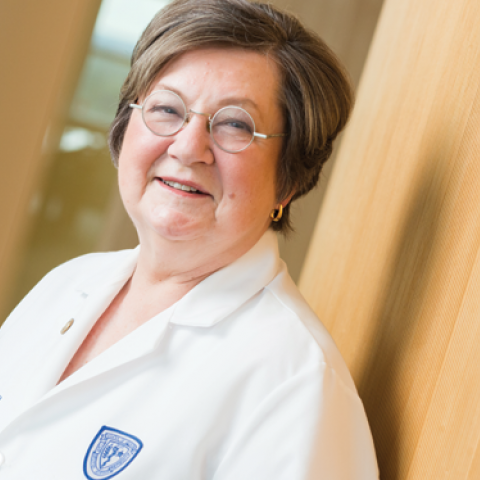This tagline captures a great deal of the work of our School of Medicine. This week, these values were rewarded by our rise to #20 in medical school NIH research funding reported by the Blue Ridge Institute for Biomedical Research rankings. Congratulations to all of our investigators!
Case Western Reserve University/Cleveland Clinic Lerner College of Medicine, as indicated in the Blue Ridge table, represents all NIH funding garnered under Case Western Reserve’s DUNS number or its subsidiary numbers. It includes NIH funding in our basic sciences and at all four of our affiliated hospitals. I’m especially proud that so much of this funding is highly collaborative, from the Clinical and Translational Science Award, led by Vice Dean Mike Konstan, that includes nearly all the schools at the University, as well as all of our affiliated hospitals, to highly collaborative and interactive studies within individual departments. Our Case Comprehensive Cancer Center, led by Stan Gerson, Director Case CCC and Vice Dean, Oncology, collaborative among the University, University Hospitals Cleveland Medical Center, and the Cleveland Clinic for many years, continues to drive toward better community health and cancer cures.
We lead national collaborative studies, such as EDIC (Epidemiology of Diabetes Interventions and Complications, now led by Rose Gubitosi-Klug), which, together with its predecessor, the DCCT (Diabetes Control and Complications Trial), changed our approach to diabetes, prolonged many lives and saved many distressing complications. Our inflammatory bowel disease (Fabio Cominelli) and Alzheimer’s (Jim Leverenz) programs extend across the city. We are highly collaborative, and it has greatly enhanced our ability to make and advance discoveries.
Our grants also address community needs. Our NIH planning grant to tackle racial disparities in cancer impact (Nate Berger) is only one example. Studies of the impact of witnessed violence on children’s sleep (Jim Spilsbury) inform our approach to violence. The continuation of data analysis from SPRINT (Systolic Blood Pressure Intervention Trial, led by Jackson Wright) has changed practice for treatment of high blood pressure, and the new analyses contribute to potential delays of dementia. In this space, many more studies are funded by state, local, foundation and philanthropic support than are supported by the NIH. Our vice dean for translational research, Mike Konstan, leads many of these efforts (in addition to Kurt Stange, Darcy Freedman, and Erica Trapl.)
And, of course, we seek cures. Over the last eight years, we have made a major concerted effort to bring our impressive discoveries to patients in our commercialization program. Discoveries that arose in our NIH projects now are approaching release for early diagnosis of Barrett’s esophagus (Sandy Markowitz, Amitabh Chak, and Joseph Willis). We are pressing forward on drugs to enhance engraftment of stem cell transplants (Sandy Markowitz and Stan Gerson), to increase regrowth of severed neurons (Jerry Silver), and to treat multiple sclerosis (Paul Tesar), among other important indications. Incredibly hard work from Research Vice Dean Mark Chance has greatly accelerated the progress of our discoveries to patients, and much of this advancement has occurred with support from our great donors. But they all started with basic NIH funding.
That’s one reason I’m so delighted we have achieved top 20 status. It offers the best hope for making a difference in people’s lives, in the short term.
I’m also pleased to congratulate our departments that are top 10 in the country. They are: Physical Medicine and Rehabilitation based at MetroHealth; Pathology based at UH; and Biomedical Engineering which is combined between the School of Medicine and Cleveland Clinic. Departments that are in the top 20 in the country in NIH funding include Dermatology, Ophthalmology, Radiology, Pediatrics, Public Health (a new designation this year – presumably this is Population and Quantitative Health Sciences) and Biochemistry (which includes Molecular Biology and the RNA Center in our designations). For the clinical departments, these tallies include grants in this specialty at any of our affiliated hospitals, added together. And congratulations to Rafick-Pierre Sekaly, who is this year among the top ten investigators for NIH funding in departments of Pathology.
So let's pause for a moment and savor our success. Then, as we always do, take a deep breath and plunge back into the fray to make still more important discoveries, advance still more of our technologies to patients and to our community, and develop our best new ideas.
Congrats to all our investigators! I wish you all the best to come – and may your discoveries make a difference.
Pam


